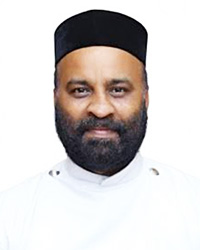Welcome to St. Mary's Orthodox Syrian Church, Kottayam

St. Mary’s Orthodox Syrian Church is an ancient Orthodox Syrian Church situated in the prestigious town of Kottayam, in Kerala state, India, with His Holiness The Catholics of the East as its supreme head, better known as Kottayam Cheriapally.
It is one of the oldest churches in Kerala, India. Built in 1579, the church is well preserved. The architectural style of the church is European, with galleries, pillars, cornices and pediments. The walls are adorned with beautiful murals made in Oriental and Western styles on biblical and non biblical themes.
The fact that 3 Metropolitans of the Orthodox Syrian Church emanated from 3 families of the Kottayam, is of great honor. They were H.G. Punnathra Mar Dianasious, Dr.Philipose Mar Theophilose and Yuhanon Mar Athanasius.
Hearty welcome to our site. We hope this site will provide you with assurance that your offerings/donations are received with profound respect, and are utilized to maximum effectiveness. It will also enable you to make the informed decisions that are necessary for a meaningful relationship with your church!
Fr. Mohan Joseph
Vicar